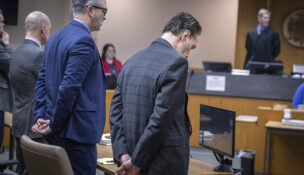Medical Expenses Case Analysis
By: dmc-admin//October 22, 2003//
There are two ways to interpret this case: (1) it is incompatible with the Supreme Court’s decision in Bleyer v. Gross, 19 Wis.2d 305, 120 N.W.2d 156 (1963), and entitled to no precedential value; or (2) it is an object lesson in careless expert testimony.
The court of appeals concluded that Hanacik’s testimony on cross was fatally inconsistent with his testimony on direct; this is not the case.
On direct, Hanacik testified that, over the course of the next 35 years, Weber would have to visit him “on average” 20 to 25 times annually.
Nowhere in the selected portion of cross-examination does the expression “on average” occur. Thus, the cross-examination testimony does not contradict the estimate.
A careful reading of Hanacik’s testimony reveals nothing more than that he cannot state in any given year how many chiropractic visits Weber will require.
At one point, he stated, “next year I may see her only three times. It depends on what is happening with her.”
Thus, Hanacik’s testimony demonstrates that the best case scenario would be that Weber would only visit him three times in the year. That is still sufficient to support an award of future health care expenses.
In fact, that would be more than the jury awarded. At $60 per visit, three times per year, for 35 years, the award would be $6,300. If the jury found Hanacik’s testimony credible (which it clearly did to some degree, or it would not have awarded any future health care expenses), the record contains ample support for the lower award of $5,000. (At 20 times per year for 35 years, the amount would be $42,000).
In all material respects, the testimony by Dr. Hanacik is no different than the testimony of the expert witness in Bleyer which also involved an automobile collision resulting in allegedly permanent shoulder injury. Bleyer, 19 Wis.2d at 308.
The expert in Bleyer testified “on the basis of findings and the progress to date, I feel that she will probably require continued medication and drugs…” Id. at 310. He added, “I feel that this injury has resulted in permanent disability … and she will probably continue to have these symptoms throughout her life.” Id. (emphases in original).
Upholding the award of future health care expenses, the Supreme Court stated, “The expert medical testimony adduced here was not in terms of ‘possibilities’ but ‘probabilities’ and as such there was sufficient competent evidence to support a jury determination that there was permanent injury accompanied by pain which required further treatment. The attending physician, when called upon to testify concerning future medical expenses testified: ‘On a yearly basis, it would probably run approximately $200 to $250,’ and that this was, ‘On the basis of the past experience of approximately three-year duration of hospitalization, medical care, and drugs, which she has required to date.” Id. at 312.
| |
||
|
Links Related Article |
||
| |
||
In the case at bar, the court does not cite to any evidence refuting Hanacik’s testimony on direct that Weber’s injuries are permanent, and will require future treatment.
All the testimony on cross-examination establishes is that Hanacik cannot say, to a reasonable degree of professional certainty, that she is going to be in 20 to 25 times in any given year over the next 35 years.”
That does nothing to turn the probability of future health care expenses into a mere possibility. The 20-25 times per year is an “average,” just as the “approximately” $200-$250 drug bill “on a yearly basis” to which the expert in Bleyer testified.
As in Bleyer, in which the estimate was based on the past three years of treatment, the estimate here had a similar basis: the past
year of treatment. That the average in Bleyer was based on three years of treatment, rather than one, may make the case stronger in Bleyer, but it is a credibility difference — not one which makes the evidence in the case at bar insufficient as a matter of law.
The expert’s testimony was careless, but, at no point was there a direct contradiction that “on average” Weber would have to visit him 20-25 times per year, and the evidence was more than sufficient to support the substantially lower award that the jury approved.
– David Ziemer
Click here for Main Story.
David Ziemer can be reached by email.
Legal News
- FBI launches criminal investigation into Key Bridge collapse
- Man charged in slaying after woman’s leg found at Milwaukee-area park
- Minnesota man guilty in fatal stabbing of teen on Wisconsin river, jury finds
- Wisconsin teen sentenced in bonfire explosion that burned at least 17
- Wisconsin man who broke into home, ate victim’s chicken, slept in victim’s bed, receives prison and jail sentences
- Judge refuses to dismiss Hunter Biden’s gun case
- House passes reauthorization of key US surveillance program after days of upheaval over changes
- Milwaukee Police officer traveling to Georgia training retires before facing discipline
- Evers to ask legislature to approve largest increase in state support for UW System in two decades
- 7th Circuit Court of Appeals proposes new rules
- Federal agencies allege toxic work environment for women in new report
- Wisconsin man sentenced for sex trafficking a woman and a minor online
WLJ People
- Power 30 Personal Injury Attorneys – Russell Nicolet
- Power 30 Personal Injury Attorneys – Benjamin Nicolet
- Power 30 Personal Injury Attorneys – Dustin T. Woehl
- Power 30 Personal Injury Attorneys – Katherine Metzger
- Power 30 Personal Injury Attorneys – Joseph Ryan
- Power 30 Personal Injury Attorneys – James M. Ryan
- Power 30 Personal Injury Attorneys – Dana Wachs
- Power 30 Personal Injury Attorneys – Mark L. Thomsen
- Power 30 Personal Injury Attorneys – Matthew Lein
- Power 30 Personal Injury Attorneys – Jeffrey A. Pitman
- Power 30 Personal Injury Attorneys – William Pemberton
- Power 30 Personal Injury Attorneys – Howard S. Sicula











